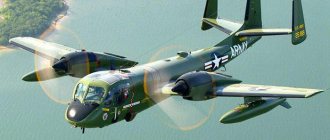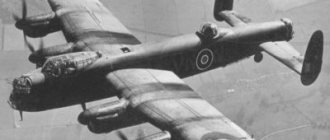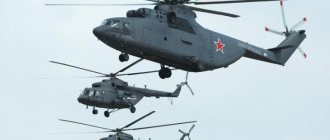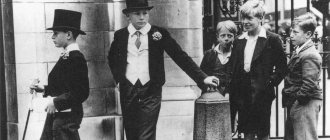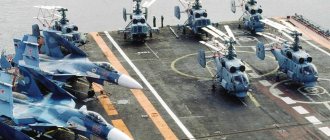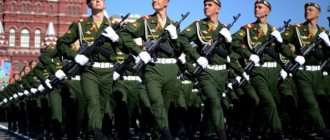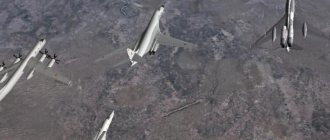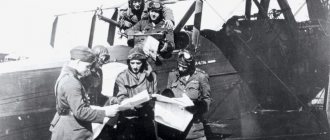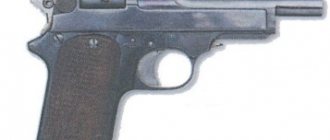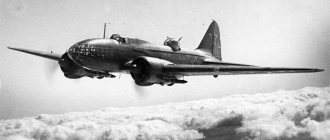Types of aviation in the Russian Federation
Within the state there is a clear distinction regarding the purpose of aircraft. All types of aviation in the Russian Federation are described in the main aviation document - the Air Code. What types of aviation are there?
- Civil.
- State.
- Experimental.
Each of the listed species is divided into subspecies. So, for example, the types of civil aviation are understood as: directly civil (created for passenger transportation), civil commercial (used for commercial purposes, transportation of goods, transport, and so on), general aviation (aimed at performing useful work for society in agriculture, for medical and police assistance, as well as for private flights and training).
Experimental usually refers to technical testing of aircraft and various experimental work. State aviation is divided into military and state special purpose (detachments of the Ministry of Emergency Situations, Ministry of Internal Affairs, created to perform various kinds of special tasks). These two types of aircraft can also be used on commercial missions.
VIP aviation
Abroad, this type has long taken a leading position and has a high level of service. In Russia it is defined as business and has only just begun to pick up speed in its development. Business aviation also falls into this category. Typically, this type refers to the private use of small aircraft.
The most popular aircraft at the moment remains the Gulfstream G500. Such aircraft are most often privately owned by one owner or rented from certain companies engaged in providing exclusively VIP service. The aircraft is ordered with personnel in the form of a pilot and a service conductor. All nuances are discussed directly with the customer (including the interior decor).
Sports aviation
Aviation of initial training also belongs to sports; these are all those who are associated with flying clubs; such pilots are issued a certificate of an amateur pilot (private pilot). Aeroclubs usually provide initial skills in piloting small airplanes. The aircraft fleet is represented by the Yak-55, Su-26, Yak-18T, Yak-52. For athletes involved in parachuting, the An-2 is used. Some aircraft may be owned by certain people and used in addition to the above functions in the commercial transport of cargo and passengers. In general, all flying clubs in Russia are privately owned.
Small aviation
What is the difference between business aviation and small aviation? One might say, nothing, but this concept has not yet been defined at the legislative level; it can be included in the section of general aviation. Small aviation aircraft have a capacity of up to eighteen people, and a take-off weight of up to nine thousand kilograms.
Small aviation also refers to the infrastructure of airfields, their maintenance by technical staff, the air traffic control system, and so on. All over the world, the total number of small aircraft is growing, and in Russia the number of runways and sites is increasing.
History of civil aviation
Not so long ago, the passenger turnover of air transport in our country exceeded that of railway transport.
We have already talked about how the first trains appeared; now Diletant, together with Rostec, will remember the history of civil aviation.
First passenger
Flyer 1 by the Wright Brothers
The Wright brothers lifted their self-built Flyer 1 into the air for 59 seconds. Then, in 1903, they managed to fly 260 meters. In 1908, five years later, the brothers took their first passenger and part-time good friend, Charlie Furnos, on board the plane. That same year, Thomas Selfridge died, becoming the first person to die in a plane crash. Despite this, the US Administration entered into a contract with the brothers for the supply of one aircraft, which cost the treasury $25,000. However, the government played it safe by adding a clause to the contract stating that the plane “must fly a distance of 160 kilometers without falling to the ground.”
The Wright brothers lifted Flyer 1 into the air for 59 seconds.
First charter flight
Olympic liner became the destination of the first charter flight.
It turned out to be completely unusual. One of the respected passengers of the Olympic liner forgot his glasses and remembered about it only when the ship had already left New York harbor. The Wanamaker carrier company loved its customers so much that they specifically hired British aviator Tom Sopwith. Tom grabbed his glasses, took off in his plane, caught up with the airliner and threw his glasses onto the deck.
First airline
The plane of the St. Petersburg Tampa Airboat
In 1914, 10 years after the Wright brothers' flight, the first airline appeared whose planes flew on a schedule. The first flight schedule included two cities: St. Petersburg and Tampa. In fact, of course, a flight from Russia to America was not possible at that time. St. Petersburg, or St. Petersburg, is a city in the state of Florida, on the west coast. To the east is the city of Tampa. Therefore, the first customers of the first St. Petersburg Tampa Airboat Line could only afford a short half-hour flight from one part of the peninsula to another.
In 1914, a company appeared whose planes flew on schedule
Millionth passenger and flight on autopilot
The first airline to carry more than a million passengers
Already in 1934, the oldest existing airline, DeutscheLufthansa, opened in 1926, reached the symbolic mark of one million passengers transported already in 1934. Two years after its formation, the first device was created in Great Britain that could fly an airplane for some time without the help of a pilot.
The oldest airline currently in existence is DeutscheLufthansa.
First flight attendant
Elin Church - nurse and first flight attendant
American nurse Ellyn Church in 1930 decided once and for all to connect her life with aviation. But since she was not destined to become a pilot, she began serving passengers on board. There were 11 of these on her first voyage.
United Airlines liked the idea so much that within two months they began hiring flight attendants for all of their flights. At that time, by the way, they had quite a lot of work - a hot lunch on board the plane usually included a fruit cocktail, fried chicken, cookies and hot coffee.
Meanwhile in Russia
During the flight, passengers of the Ilya Muromets could walk along the promenade deck
It’s hard to believe, but it was in our country that the world’s first passenger aircraft was designed. While flights were still an experimental matter, engineers of the Russian-Baltic Carriage Works under the leadership of Igor Sikorsky already in 1913 designed the Ilya Muromets biplane. The following year, a demonstration flight was carried out: there were 16 people and one dog on board, and the chief engineer of the device, Sikorsky, took the helm. In various modifications, Sikorsky's plane took several world records for flight length, altitude and flight time.
It was in Russia that the world's first passenger aircraft was designed
In general, “Ilya Muromets” is a big breakthrough for aviation. Sikorsky proposed several innovations that are still used in the aircraft industry. For example, he was the first to separate the cabin and the pilot’s cabin; for the first time, a toilet and sleeping rooms appeared on the Ilya Muromets. The salon was heated by gas heating and illuminated by electricity. No one could even imagine such comfort on board at that time.
Situation today
Model of the MS-21 airliner
Russian engineers continue to innovate in the aircraft industry today. One of the most ambitious projects is the Mainline Aircraft of the 21st Century, or simply MC-21. The first flights of the device are planned for 2016, serial production - for 2017. The uniqueness of the MS-21 is that it should become the first “electric aircraft” in Russia. Most of the drilling devices will be converted to electric mechanisms, while auxiliary energy sources will be used in the MS-21, which will ensure the operation of the engines if they stop in the air. To electrify the aircraft, Rostec enterprises have already produced a number of equipment that are undergoing testing.
MI-38 will be built at the Kazan Helicopter Plant
Not only airplanes, but also helicopters have become widespread in civil aviation. Since they are not designed for mass passenger transportation, they are used in a variety of areas. For example, the Ansat light helicopter of the Russian Helicopters holding is used in air ambulances: the medical version of this aircraft delivers patients to medical institutions, and also allows the victim to be resuscitated directly on board. And the MI-38, which began to be produced in 2015, can generally be transformed from a civilian helicopter into a military one.
Military aviation
This is a special type of state aviation, which has not only its own subtypes, but also types. It is intended to carry out defensive and offensive purposes, that is, to perform combat duty, including sorties, reconnaissance missions, transferring military detachments and weapons to a certain area, establishing a leading level in the air and, of course, to carry out combat sorties and operations.
Among the types of military aviation are:
- Far.
- Frontline.
- Army.
- Air defense aviation.
- Marine (Navy).
- Transport aviation.
- Special purpose aviation.
Not everything that has wings is called an “airplane”. Types of aircraft
What do we know about aviation? Very little, in fact. Since childhood, we have been instilled with a fear of heights; most people are still afraid of flying. And the older generation, who are over 60, have never seen clouds from a bird's eye view.
So it is with types of aircraft. For most people, anything that floats into the air that doesn't look like a balloon is an airplane. Our parents still know what a “corner” is. Units will be given to you by other categories of aircraft.
We invite you to take a closer look at the “winged devices”.
Types of air transport:
- Airplane. Or an airplane
This vehicle has fixed wings and weighs more than air. Airplanes have engines, which makes them different from other types of aircraft. In 1903, the first airplane took off from the United States. Aircraft are divided into different types, depending on their purpose, weight, type of transportation and engine. There are such airplanes:
- fighter;
- scout;
- bomber,
- attack aircraft;
- launch vehicle.
Division by engine type:
- reactive;
- electric;
- piston;
- turboprop.
There are passenger planes designed for transporting mail, cultivating fields, military exercises, etc.
- Helicopter
And this “thing” weighs more than what we breathe. It flies thanks to a propeller that rotates horizontally. The helicopter first took to the skies in 1907. This happened in France. And the helicopter has different needs: - used for personal purposes, for quick movement;
- it is used to extinguish fires;
- used for military purposes;
- used by police and doctors.
Unlike an airplane, a helicopter does not need a whole runway for landing and takeoff. It can land on a relatively small, flat surface.
This is a kind of combination of an airplane and a helicopter. It has both wings and propellers. Thanks to the first, it develops high speed, and thanks to the propeller, it can “sit down” vertically.
Small aircraft. However, it is quite heavy. Has a rigid wing and engine. They are used most often for private purposes, as a means of transportation for tourists.
The same applies to light aircraft. The main characteristic is that there is no motor. The invention belongs to the Germans. In general, a hang glider is three large tubes that are connected to each other. A fabric is stretched over the pipes. Flight occurs thanks to the pilot. The maximum speed that was achieved on this device was 130 km/h. This was a record. On average, a hang glider flies at a speed of 30 kilometers per hour.
Externally, it is very similar to a regular parachute. In fact, it is. The only difference between a paraglider and a parachute is the control method. Well, its shape is more oblong than round. It is impossible to control the parachute during flight. A paraglider is possible thanks to several holes that allow air to pass through and allow maneuvering. Today this aircraft is used for sports competitions.
We have not listed all types of aircraft, since humanity does not stop successfully conquering the sky and comes up with new ways.
Far
The purpose of strategic aviation (long-range) is to destroy enemy targets, including aircraft, directly in the rear of combat operations. In addition, long-range aviation performs reconnaissance and other special missions. The main representative of the aircraft fleet is the Tu-160.
The first bomber was the famous “Ilya Muromets”, created in 1914, during the reign of Tsarist Russia, at the same time the first special squadron of heavy bombers was created. And during the Second World War, one interesting story happened related to the Soviet long-range bomber Pe-2. Then, in 1942, he successfully transported the People's Commissar for Foreign Affairs Molotov in both directions, who managed to achieve allied “handshakes” with the USA and Great Britain.
Comrade Molotov recalled that when he was on the plane, dressed in the same way as the rest of the crew - in high boots, fur overalls and a helmet, he no longer felt like the second man of the USSR after General Secretary Stalin. German intelligence, by the way, learned about this incident only a few days later, when it was no longer possible to interfere with the negotiations. Thus, the Pe-2 was nicknamed the “diplomatic bomber”.
Functionality of the equipment
As stated above, airliners are divided into two main groups: aircraft for civil and military aviation. In addition, experimental devices are a separate type here. Each category here involves division into variations according to the type of purpose and functionality of the aircraft. Let's start by studying aircraft that are used for “peaceful” purposes.
Civil aircraft
Let's define in more detail what types of aircraft there are, the names and subtypes of flying modifications. Here aviators are talking about four model options. Let's list the categories like this:
- passenger liners;
- cargo sides;
- training airbuses;
- special purpose aircraft.
Note that modifications for passenger transportation are separately divided into groups that determine the flight range. Here they refer to mainline ships and airliners for local transport.
Aircraft classification
In addition, two more subgroups are distinguished in these categories. The difference is revealed by the number of passengers on board and the specific distance the ship travels without refueling. Here the mainline models are of the following types:
- short-range ones that cover distances of up to 2,000 km;
- medium, capable of flying 4,000 km;
- long-distance, operating flights up to 11,000 km.
In addition, the maximum capacity determines the following criteria for local airliners:
- heavy aircraft with 100 or more seats;
- medium modifications that carry up to 50 people;
- light airliners carrying a maximum of 20 passengers.
Among the examples of local aircraft we list modifications of SAAB , ERJ , Dash-8 , ATR . It is interesting that certain types of airliners of the local category are equipped with power plants of different classes. Here you can find models with jet engines and aircraft with turboprop engines.
Airbus A380 - a giant in the world of passenger airliners
Considering long-haul aircraft Boeing and Airbus ships familiar to passengers . Boeing aircraft are designed by an American corporation, and Airbus aircraft are designed by a European holding company. Both companies compete with each other, constantly developing and modernizing aircraft. Thus, today the Airbus A380 is considered the heaviest aircraft, although until the release of this modification, the American developments Boeing 747 400 and 747 800 were in the lead.
The 747 models were the first wide-body aircraft that are still in operation today. In addition, such aircraft are used by the best carriers in Russia and the world.
Boeing aircraft are the main competitor in the field of passenger transportation of the European holding company, which produces Airbuses.
However, the Europeans are not lagging behind their main competitor. The Airbus Industrie A320 Jet, Airbus A300 and A350 XWB modifications have won popularity and recognition among pilots. The A300 is the world's first wide-body aircraft equipped with two engines. As you can see, the possible variations in the classification of airliners cannot be described in one review. But knowing what types of airplanes there are and who created them, the reader will decide on personal preferences and find out the basics of aviation.
Military aviation
Now let's briefly study the typology of courts used by law enforcement agencies. Among these aircraft there are manned airliners and drones, modifications with different types of engines, including rocket engine subtypes. However, we will consider the division of these types according to profile criteria.
Military transport aircraft Il-76
Here, as in the civil classification, there are transport liners that transport personnel. These are the Il-76, An-12, 26 and 124. In the USA, these functions are carried out by the Boeing C-17, 97 and Douglas YC-15. In addition, the military also uses auxiliary equipment - medical aircraft, communications aircraft, spotters. However, military aircraft developments also use several categories of vehicles that are found only here. Their list is as follows:
- Bombers . The task of these models is to hit enemy ground targets. Such aircraft are widely used by the armies of the world during combat operations. Among the developments of Russian and USSR designers, we can name the Su-34, Su-24, Tu-160, and Ilya Muromets, created by I. Sikorsky. This model was used at the beginning of the twentieth century. Foreign companies will be able to boast of the XB-70 Valkyrie, B-52 Stratofortress, and Northrop B-2 Spirit aircraft.
- Fighters. Such aircraft are created for airspace defense. The function of these aircraft is to escort, protect and destroy enemy aircraft. In accordance with the purpose of the airliners, aviators divide such modifications into three subtypes. There are escort aircraft, front-line equipment - attack aircraft - and air defense models. Today in Russia the MiG-29, MiG-35 and Su-35 are used for such purposes. Foreign aviators are offering the army a model of the Boeing F-22.
The legendary domestic bomber “Ilya Muromets”, created by I. Sikorsky
- Station wagons . The so-called fighter-bombers are equipment that is capable of combining the performance of several tasks. The advantage of these devices is undoubtedly, because such an aircraft is capable of striking an enemy position single-handedly. Here, the first airliner of this class was the Me.262, produced by German developers. The USSR used the Yak-9. Today this place is occupied by the MiG-27 and 23B, Su-17 M models. And the F-105 aircraft operates abroad.
- Reconnaissance aircraft . The purpose of developing these modifications was to study the situation at enemy positions from the air. Today, unmanned aerial vehicles are mainly used for such purposes. The disadvantage of such sides is considered to be weak protection, since this device is easy to shoot down. The Reaper, developed by British designers, is considered to be a fairly well-known model in the world.
As you can see, the category of military aircraft is quite extensive and deserves serious study. We have only briefly described the main criteria for systematizing such a group. However, aviation experts prefer to classify aircraft using a comprehensive study that includes a complete description of the aircraft design. Let's dwell on this issue.
Frontline aviation
This type of military aviation was created to perform combat missions, as well as to participate in operations carried out by the ground forces and the Air Force of the Russian Federation. Types of front-line aviation (types): attack, fighter, reconnaissance, bomber, fighter-bomber, auxiliary.
The concept of front-line aviation first appeared in the First World War, and after the formation of the Soviet Union, separate aviation detachments were identified, which were united into district ones. By the beginning of World War II, front-line aviation already consisted of divisions: bomber, reconnaissance, and so on. Now this type is armed with aircraft with supersonic engines, equipped with cannon weapons, missile launchers and bomber equipment. Also, all aircraft are equipped with radar.
Front-line aviation is also called tactical because of its ability to carry out missions in absolutely any weather conditions and destroy targets with supersonic capabilities at long distances. The functions of front-line aviation also include covering troops, assisting ground forces in the form of airstrikes against the enemy, both mobile objects and military immovables, and carrying out reconnaissance flights. Reconnaissance is carried out on the Su-24MR.
What is a PMC and why do they need aviation?
Private military companies are commercial organizations that offer specialized services for the protection/defense of customer facilities or directly the customer and his family members. Such organizations have a clear structure, similar to the army, and in terms of the quality of weapons used, they are not much inferior to the armies of developed countries.
Often, PMCs are involved in armed conflicts to collect intelligence information, as well as for consultation and training of personnel of the customer’s military units. The first such organization is considered to be the British company Watchguard International, created by the founder of the SAS intelligence service, Colonel David Stirling, in 1965.
If initially PMCs did not have combat aircraft in their composition, then over time the situation began to change. Having started with helicopters for transporting personnel, today some companies have their own air forces, the size of which some countries may envy.
These combat (and not only) aircraft and helicopters are officially acquired after decommissioning from the air forces of a number of states (USA, UK, former members of the Warsaw Pact, and so on). Naturally, this is mainly equipment of previous generations and there is no point in comparing its characteristics with modern combat aircraft. But to carry out the tasks of PMCs - covering ground operations, evacuating the wounded, delivering military cargo with security - it is more than enough. In addition, these planes and helicopters are additionally being modernized and equipped with more modern avionics.
Separately, it is worth noting the use of PMC air forces as an enemy during exercises to train state air force pilots. For the first time, specialized squadrons, that is, “aggressors” imitating a potential enemy, appeared in the US Air Force and Navy at the height of the Cold War, after the conflict in Vietnam.
There were similar units in the air forces of other countries. For some time after the collapse of the USSR, the need for exercises with “aggressors” disappeared, but NATO’s interest in such exercises was revived as tensions in the world grew. Today (Adversary Air Support, AAS) or simply "Red Air" is provided by private air forces.
Their pilots, flying foreign (and not only) aircraft, participate in simulated air battles in the role of a potential enemy. The first contracts with PMCs were signed around 2000, and over the next two decades the market grew to billions of dollars. In 2022, the US Air Force signed a $6.4 billion contract with seven PMCs to provide AAS services.
Army and fighter aviation
In order to lead the leading level in the airspace, it must first be occupied; this is done by fighter aircraft. It fights for superiority by destroying enemy aircraft, going into tactical depth. Air combat is not easy, so pilots perform such maneuvers in fighter jets, the most famous of which are the MiG-29 and Su-27.
Army or military aviation is a type of air force aviation directly subordinate to the ground forces of the Russian Federation. With its help, military personnel are landed, reconnaissance is carried out and ground forces are supported by combat fire. It is divided into assault, transport, special purpose and reconnaissance. The advantage is that in addition to airplanes, the army also has helicopters, for example Mi-24, Ka-52, Mi-28.
Aircraft functionality
Using this classifier, all aircraft can be divided into two separate categories. The first category includes military airliners, and the second category includes aircraft with civilian purposes. In addition, there is a third group that rarely receives the attention it deserves. This group includes all experimental flight equipment. In each category, several main groups can be distinguished, which include all aircraft that have the same functionality and purpose. To begin with, we propose to consider the main types of aircraft that are used in civil aviation.
civil Aviation
In order to better understand the characteristics of this group, it is necessary to pay attention to the types and subtypes of aircraft belonging to this category. Aviation experts identify four main options for civil aircraft:
- Passenger aircraft.
- Airplanes for transporting cargo.
- Training aircraft.
- Flight equipment with a special purpose.
The world leaders in aircraft production are the USA, the European Union and Russia.
All models of air transport intended for passenger air transportation can be divided into several separate types depending on the duration of the route . These can be aircraft intended for local flights or long-haul aircraft. In addition, a separate subgroup can be distinguished, which takes into account the capacity of the aircraft and the maximum distance that the aircraft can cover without refueling. This classification of aircraft is as follows:
- Aircraft capable of covering a distance of up to two thousand kilometers.
- Airliners capable of flying up to four thousand kilometers.
Long-haul models capable of covering a distance of more than ten thousand kilometers. All aircraft used in civil aviation can be divided into several separate categories depending on the capacity of the vehicles. Heavy vehicles can accommodate more than a hundred passengers. Medium models allow you to transfer up to fifty passengers at a time. Light aircraft are designed to carry about twenty passengers.
Airbus is also involved in the creation of mainline aircraft models. These companies are the largest corporations, whose products are used by most air carriers. The leader among heavy aircraft is the Airbus A380. Before the release of this model, the Boeing 747, series four hundred, was considered one of the largest airliners. The seven hundred and forty-seventh Boeing model is one of the first aircraft to receive a wide fuselage. This variation of a civil aircraft is used by many world leaders in the field of civil aviation.
Military aircraft
Security forces use a separate type of aircraft, the design of which is significantly different from the design of civilian aircraft. All airliners with military purposes can be divided into two separate groups: autonomous and manned models. In the military sphere, standard aircraft are often used to transport personnel. Domestic law enforcement agencies use aircraft such as the An-12 and Il-76 for this purpose. The American military uses Boeing 97 and Douglas 15 for this purpose. In the military sphere, auxiliary equipment is often used in the form of communications aircraft and ambulances.
Among the structures with military purposes, it is necessary to highlight bombers. Such aircraft are created with the purpose of destroying ground targets. These aircraft are used by many countries around the world during military operations. Among domestic bombers, it is necessary to highlight the Tu-160, Su-24 and the Ilya Muromets bomber. Foreign intelligence services use the XB-70, better known as the Valkyrie and Northrop B-2.
A separate category is represented by fighters created for defense purposes. These flight structures are used to escort or destroy aircraft that have invaded the airspace of a foreign country. There are several separate types of aircraft in this group. These can be attack aircraft, air defense models and escort aircraft. The name of the aircraft “Mig” is known to many residents of Russia. The American army uses the Boeing F-22 fighter for this purpose.
In addition, there are universal models that combine the functions of a bomber and a fighter. This type of equipment can be used for various tasks. Such aircraft can be used to destroy enemy targets, almost single-handedly. The first airliner representing this group was developed in Germany. Domestic military structures use Su-17 and Mig 27 for this task.
The last type of military aircraft are aircraft designed for reconnaissance. Such airliners are used to study enemy positions. As a rule, this category includes exclusively unmanned aerial vehicles. Among the disadvantages of such a design, it is necessary to emphasize the weak protection. One of the main representatives of this category is the Reaper, created by English engineers.
An airplane is an aircraft, the main property of which is the ability to fly in the vastness of the earth’s atmosphere, using the necessary power plants
Air defense, naval, special purpose and transport aviation
The first type is intended to protect and cover strategically located military and other facilities, as well as territories from air attack. Despite the importance of the air defense aviation function, the work is carried out on one single representative - the MiG-31.
Among the types of Russian aviation, naval pilot detachments stand out, designed to prevent attack and destruction of the enemy, as well as its strategically important objects in sea waters. It also provides protection for warships on shore and during reconnaissance and combat missions. Navy aviation is divided into several branches: fighter, missile-carrying, attack and reconnaissance. It, like the army, has a helicopter fleet. Aircraft carriers are often the base for aircraft.
Special purpose aviation performs the functions of an assistant to aircraft in the form of aerial refueling using special devices, including those installed on unmanned airplanes, and performs radar patrols. Search and rescue operations are also included in the obligations. Initially created to work with the Navy.
And the last type that stands out among military aviation is transport. It is used to transport cargo and troops. Transport aviation also includes the largest transport and military aircraft in the world, nicknamed “Ruslan”, the An-124, as well as the An-12, An-26, and Il-76. The functions of transport aviation include transporting heavy cargo in the form of tanks, small aircraft, missiles, self-propelled artillery units and other military equipment.
Airliner typology
Aviation experts use certain criteria to classify different types of aircraft. The most important criterion is the primary purpose of the aircraft. All existing airliners can be divided into aircraft with civilian purposes and military equipment. Each of these categories can be divided into several different groups. Some experts use a classification parameter such as aircraft speed. The use of this classifier allows us to distinguish subsonic, supersonic, transonic and hypersonic models. In this case, scientists take into account how much the speed of a particular airliner exceeds the speed of sound.
Today, airliners capable of breaking the sound barrier are used for military and scientific purposes. It should be noted that some of the aircraft that can overcome this barrier are used as private vehicles. Some scientists prefer to divide all aircraft into several separate groups, using such a classifier as a control method. Manned aircraft are used in both civil and military aviation. Airplanes that fly on autopilot are widely used by scientists.
Many scientists studying the typology of airships use a classification based on the design features of the aircraft . In this case, the aerodynamic model, the shape of the wing and tail, as well as the features of the fuselage are taken into account. In addition, some experts identify a group that includes all aircraft that have a unique landing gear design.
The last classifier that is used in this area is the method of mounting engines and their features. In addition to air-breathing and muscular designs, there are electrical and nuclear devices. Some aircraft manufacturers install internal combustion engines on their products in combination with one of the above options.
